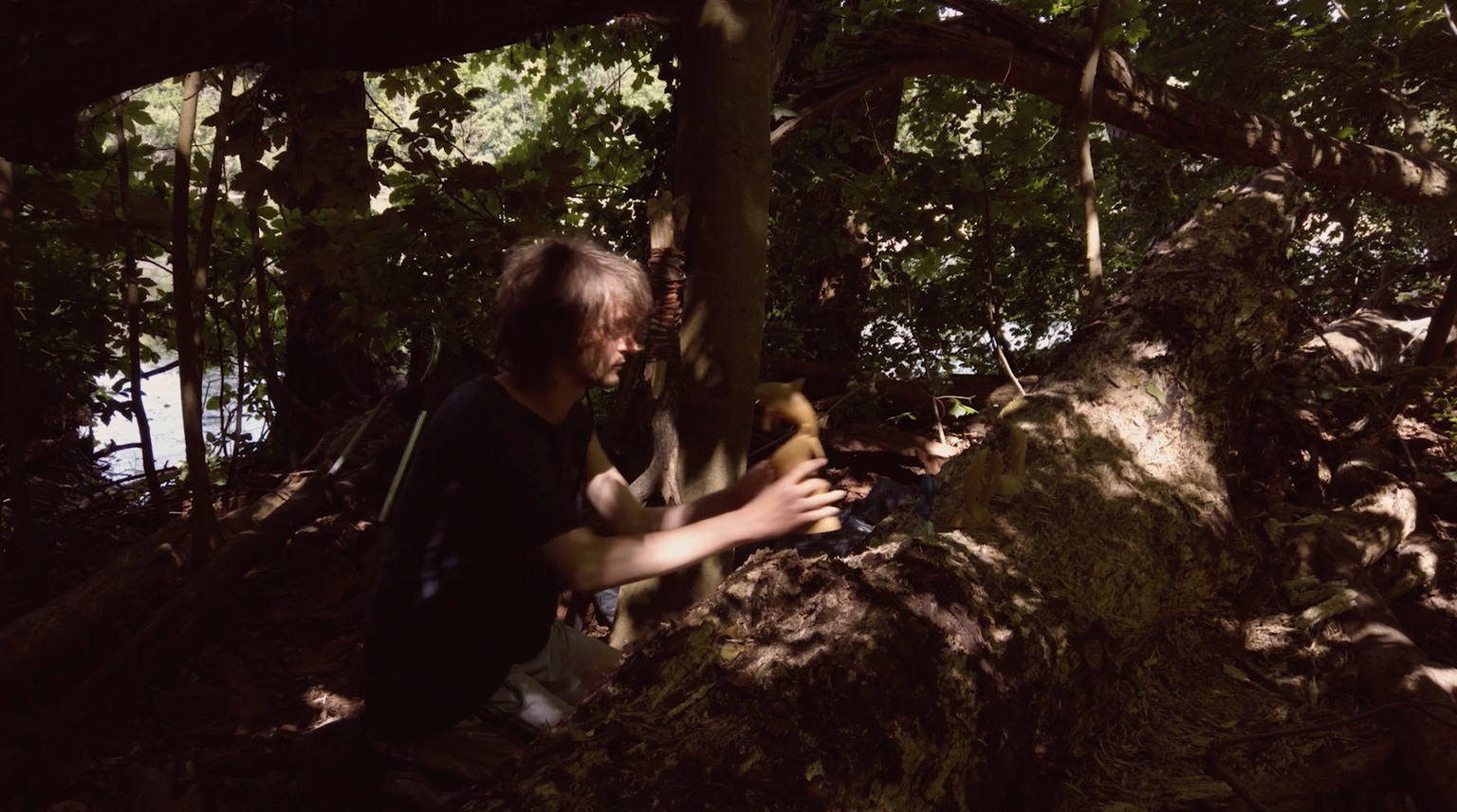Exhibition

The Treasure Hunt
Jan Peter Hammer, research fellow and PhD candidate at the Oslo Academy of Fine Arts, opens the exhibition The Treasure Hunt on the campus of the Academy parallel at Black Box and Seilduken II on 21 June.
The exhibition is part of Hammer’s PhD project and will be open to the public from 22 to 26 June. Opening hours: 10am – 6pm
Vernissage Tuesday 21 June 18.00-21.00
About Hammer’s PhD project
The Treasure Hunt is a speculative artistic investigation into the reward-oriented logics of contemporary capitalism, where treasure refers to both the ‘cultural treasures’ of the art market and the everyday incentives of the nudge economy. Using a combination of single- and multi-screen moving image, sculpture and installation, it investigates the connections between an array of seemingly disparate phenomena: the global antiquities trade, the history of metal detecting, the expansion of cognitive capitalism, and the legacies of behaviourism in everyday ‘gamification’. Drawing on the tradition of the essay film, but attempting to expand it both spatially and conceptually, the project looks at the ways in which stimuli response and reinforcement mechanisms have come to underpin vastly different aspects of contemporary globalised culture, ranging from leisure to war.
The project originally took its point of departure in the illegal trade in stolen antiquities originating in Syria, Iraq and Bulgaria. By tracking the journeys of these artefacts from archaeologically rich but economically impoverished regions to the art market, auction houses, private collections and museums in the wealthiest parts of the world, it attempted to map the entanglements of underground economies, political corruption, transnational finance and the technologies which enable them. However, the feedback-loop between treasure hunting and art markets opened out onto broader questions about reward-orientation.
The two-screen video installation DUG juxtaposes late modern phenomenon of ‘nostalgia for the future’ with the nihilism following the collapse of the Soviet industry in the early 1990s. Exposed to the supply chains of Western commodity fetishism, many unemployed workers sought their luck in looting the country’s archaeology. This became possible through the availability of cheap metal detectors, which made looting a hundred times more efficient. Seen in historical context, these events not only represent a throw-back to a hunter gatherer lifestyle but also a crude transition from the Fordist to post-Fordist labour market. In the context of global inequality, both the art markets (demand side) and the mining/looting (supply side) represent spaces of opportunity. Collecting and mining/looting of antique artefacts are not only incentivized though payments but through a multitude of reward prediction signals, maps, prices, charts, status rankings, expertise, meaningful stories, etc.
Considered via the legacy of behaviourism, the humming metal detectors beeps, for example, not only make the finding of ‘treasures’ more likely but also trigger cognitive processes related to dopamine release, similar to the effect of Facebook likes and message notifications. This cognitive perspective inspired me to use the metal detector as an allegory (“tentacles of an alien infrastructure”, DUG) of capital in its abstract and speculative form. Following this research trajectory, I studied the relation between neural biology and games. In games, a player interacts with a system of rules framed by what the historian Johann Huizinga coined ‘magic circle’ – a vital boundary between game and everyday life. In the digital age these boundaries become more and more porous since virtual- and real life scenarios can no longer be easily distinguished. This is the case because they are not only similar in appearance or deliberately linked, but because video games are systems where everything is inter-connected with everything else – player not only learn to master skills but also accept organizing principles of a game’s construction and syntax.
Fictionalizing an original story as martyrdom, the single-screen installation Hooked meditates on the ensuing consequences for subjectivity, combining documentary and fiction film elements, video game excerpts and science visualizations. The third work Garfield is a sort of postscript to bridge the two other works, by narrating a tragic event associated with the original invention of the metal detector.